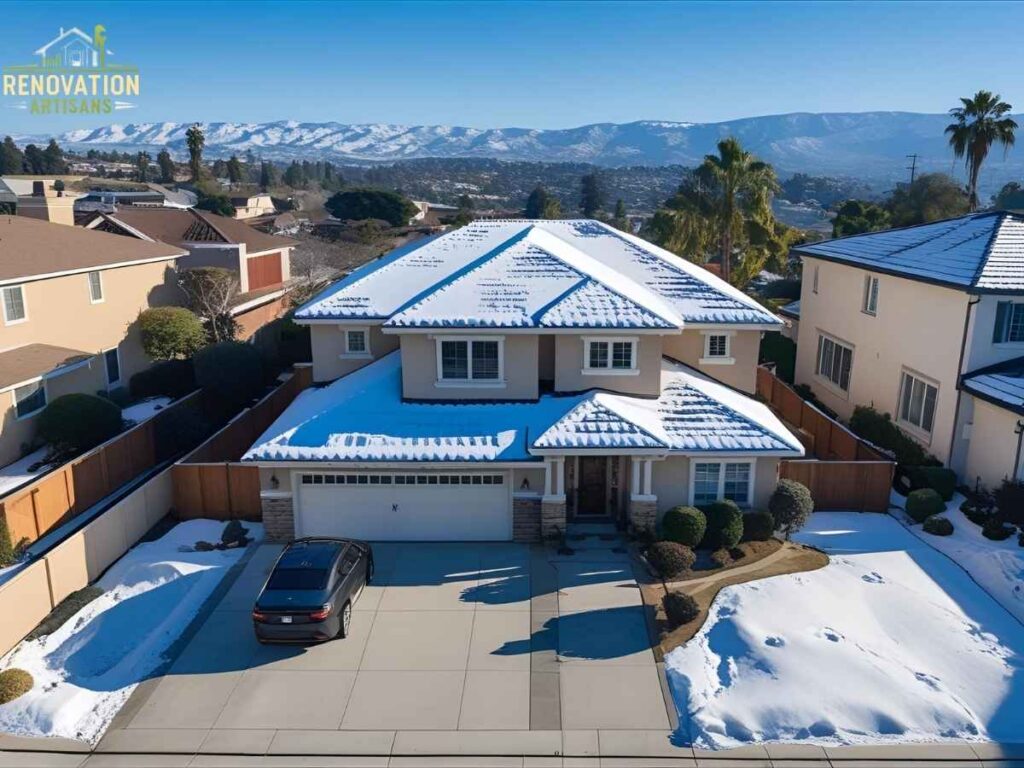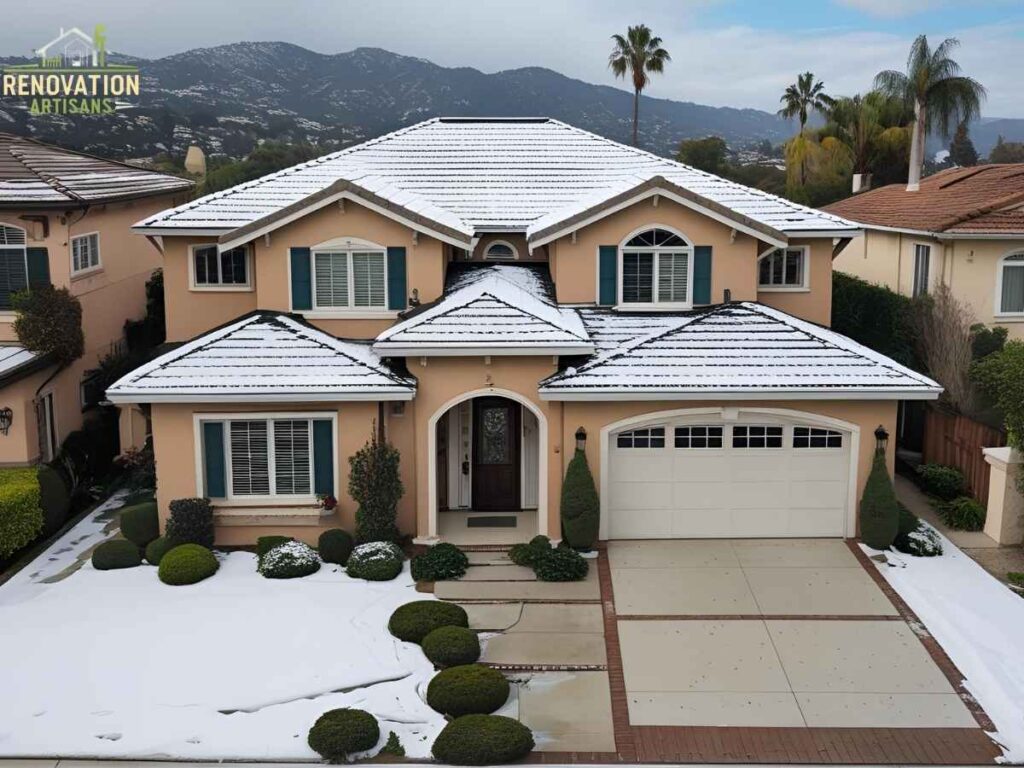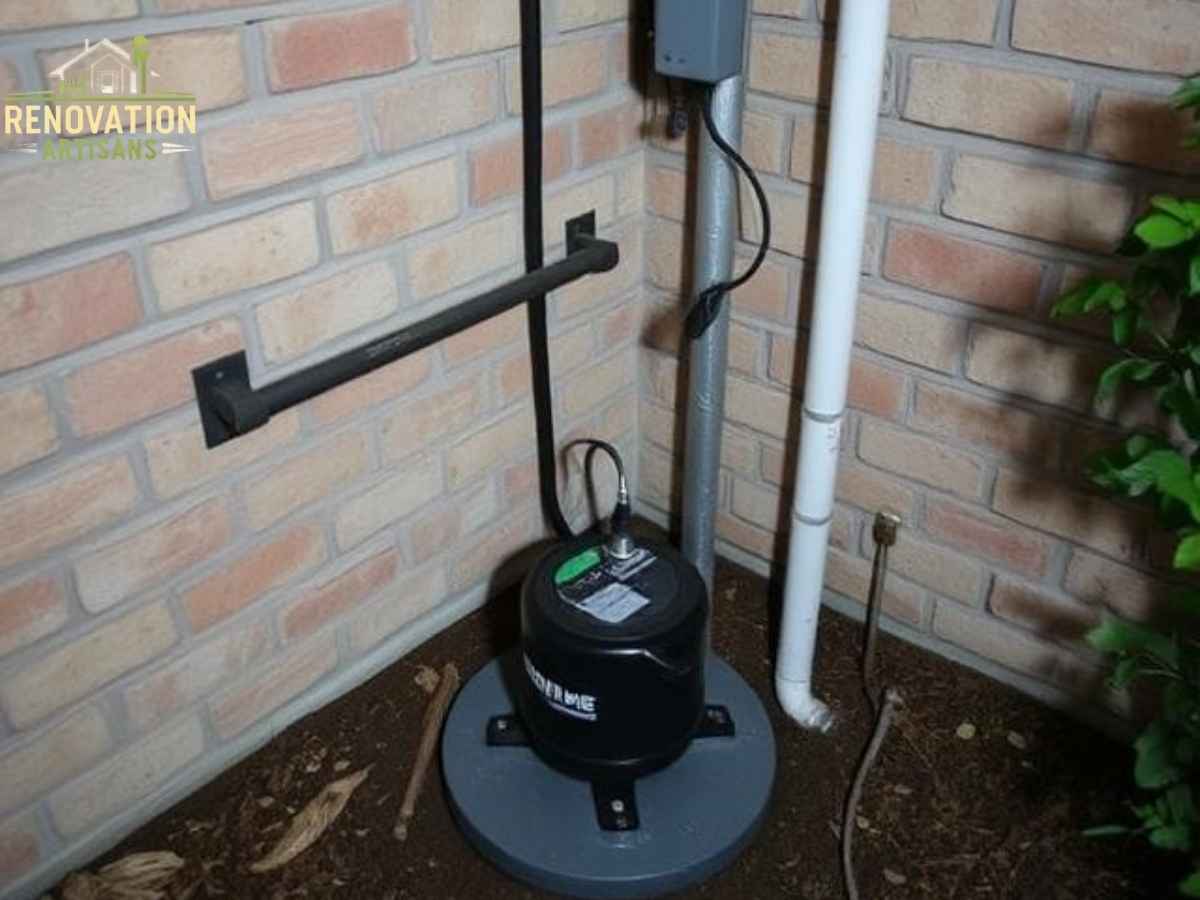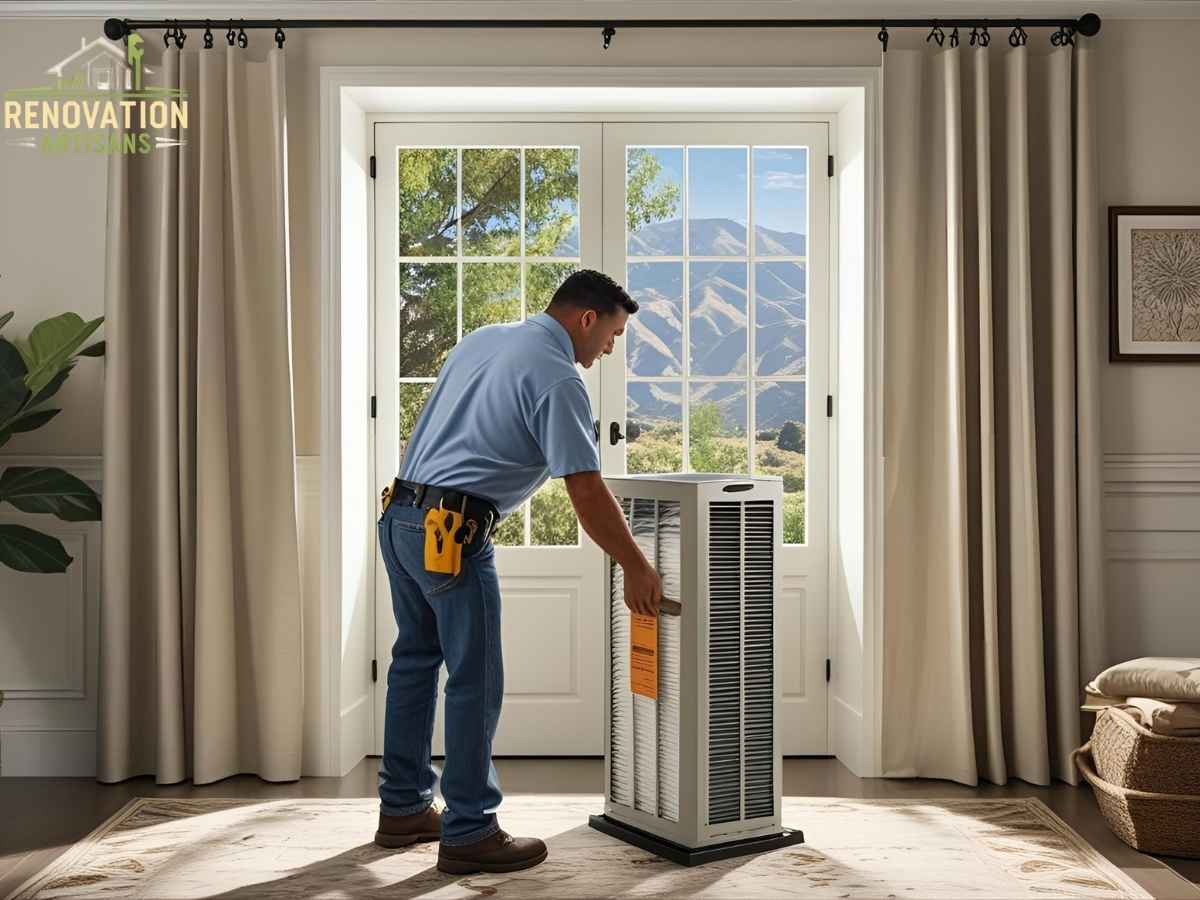As the mild but occasionally wet Los Angeles winter sets in, homeowners in Santa Teresa Hills and surrounding neighborhoods face an important task: ensuring their roofs are ready to withstand shifting seasonal weather. While Southern California winters aren’t typically harsh like in other parts of the country, the reality is that winter brings enough rain, wind, and fluctuating temperatures to jeopardize unprepared roofs—especially in hillside communities like Santa Teresa Hills, where homes often feature diverse roofing materials and complex drainage needs.
If you live in Santa Teresa Hills or nearby Los Angeles neighborhoods such as Bel Air Estates, Brentwood, or Sherman Oaks, a winter roof inspection is not just recommended—it’s critical. Proactively maintaining your roof can save you thousands in repairs later, preserve your property’s value, and ensure your family stays warm and dry through the winter months.
Table of Contents
Understanding Santa Teresa Hills’ Winter Weather and Its Impact on Roofs
Los Angeles enjoys a Mediterranean climate, characterized by dry summers and wet winters, but the winter season still presents unique challenges for roofs in Santa Teresa Hills. Situated within the 90049 ZIP code area and surrounded by hills with varied elevations, this neighborhood experiences:

- Average winter temperatures dropping to the mid-40s to low 50s °F, with nighttime lows sometimes dipping into the 40s.
- Seasonal rains concentrated between November and March, delivering approximately 2 to 3 inches of rain per month during peak wet months.
- Strong winds—often gusting up to 30-40 mph during Santa Ana wind events—which can dislodge shingles or tiles.
- An occasional intense storm with sudden heavy downpours that can overwhelm gutters and drainage systems.
These factors can hasten wear on roofing materials, especially if routine maintenance has been deferred. For example, homes built during the 1960s-1980s in nearby neighborhoods like San Vicente or Brentwood often feature vintage tile or asphalt shingle roofing that requires inspection for cracks and brittleness before winter rains arrive.
Why a Winter Roof Inspection is Crucial in Santa Teresa Hills
Many residents underestimate the need for roof inspections due to LA’s mild reputation, but irregular weather changes and the neighborhood’s hilly terrain make inspections vital. Winter rains can expose:
- Hidden vulnerabilities like cracked or missing shingles, deteriorated flashing around vents and chimneys, or loosened tiles.
- Clogged gutters and downspouts, which can cause water to pool on the roof or spill over, leading to water damage on walls and foundations.
- Roof deck damage underlying shingles that can rot due to persistent moisture buildup.
- Ineffective attic ventilation and insulation, causing condensation and mold growth during colder months.
- Wind damage, especially on roofs facing prevailing winter winds funneling through Santa Teresa Hills’ terrain.
Ignoring these issues can result in leaks, structural damage, costly repairs, and even health hazards due to mold. On the other hand, a thorough inspection identifies these problems early and lets you take simple steps before winter intensifies.
What Does a Comprehensive Winter Roof Inspection Include?
A trusted roofing professional will conduct a detailed examination of your roof and associated systems. Here’s what an expert will typically assess:
- Roofing Materials (Shingles or Tiles):
Inspect all roofing materials for cracks, warping, granule loss on shingles, or broken, loose, or missing tiles. In Santa Teresa Hills, many homes have terra cotta or concrete tiles that may crack with time or from wind-driven debris. - Flashing and Sealants:
Carefully check the flashing around roof penetrations such as chimneys, skylights, vents, and plumbing stacks for any gaps, cracks, or corrosion that could leak water during storms. - Gutters and Downspouts:
Ensure all gutters are free of leaves, pine needles, dirt, or tree debris that may clog water flow. Clean and align gutters to discourage water backflow that affects roof edges and foundations. - Roof Drainage Systems:
Check that water is draining efficiently away from the roof and foundation, including verifying the condition of scuppers, drains, and drip edges, which is especially important due to Santa Teresa Hills’ sloping landscape. - Attic and Underlayment Inspection:
Look for any signs of moisture stains, mold, mildew, or condensation within the attic space, which often indicate roof leaks or poor ventilation. - Structural Soundness:
Identify any sagging areas, deteriorated decking, broken rafters, or compromised support beams. These are early warnings of potential failure during heavy rain or wind.
Local Case Studies: Real Stories from Santa Teresa Hills and Neighboring Areas
Hearing from your neighbors can be a powerful motivator to schedule your inspection. Here are three examples of Santa Teresa Hills and nearby residents who benefited from professional winter roof inspections:
- Case Study 1: Maria from Brentwood
Maria had delayed roofing maintenance for several years, leading to unnoticed cracks and flashing failures. After the first winter rain caused water stains on her living room ceiling, a thorough roof inspection revealed rotted framing beneath cracked tiles and compromised chimney flashing. Working with a local roofing company, Maria’s repairs prevented the spread of damage; she also upgraded her attic insulation to improve moisture control. - Case Study 2: John’s Aid in Hollywood Hills
John always invested in pre-winter inspections. After heavy Santa Ana winds blew off several ridge shingles, timely repairs secured his roof and avoided leaks during storms, which extended his roof’s lifespan by an estimated five years. His professional contractor also improved gutter installation to handle more rainfall. - Case Study 3: Evelyn’s Preventative Maintenance in Sherman Oaks
Evelyn’s roof inspection uncovered early moss growth and gutter misalignment affecting water flow. By scheduling routine cleaning, minor realignments, and moss removal before winter, she prevented costly moss-related tile damage and water backups, maintaining roof integrity.
Top 3 Winter Roof Inspection Services in Santa Teresa Hills, Los Angeles
Here are the most trusted local experts ready to help Santa Teresa Hills residents prepare their roofs for winter:
1. Top Roofing Inc.
With a 25+ year legacy in Los Angeles, Top Roofing Inc. specializes in detailed roof inspections and repairs. Their certified inspectors use advanced tools and photographic evidence to provide clear, trustworthy reports. They work with all roofing types common in Santa Teresa Hills—from asphalt to tile—and offer prompt scheduling with excellent customer reviews.
Website: toproofingla.com
2. The Elite Group

The Elite Group brings over 36 years of local roofing expertise, focusing on inspecting, maintaining, and restoring roofs according to LA’s specific climate challenges. Their services include full roofing assessments, preventive maintenance plans, and emergency repairs, making them a favorite among Santa Teresa Hills residents.
Website: eliteinspections.com
3. IRC Roof Solutions
IRC Roof Solutions is known for cutting-edge inspection technology coupled with highly trained inspectors. They provide detailed assessments that highlight vulnerabilities unseen by the untrained eye, specializing in winter preparation strategies for LA’s hilly areas including Santa Teresa Hills.
Website: ircroofs.com
Local Tools and Resources for Roof Inspection and Repair
Homeowners can also leverage the following local resources for guidance, permits, and support:
- Los Angeles Department of Water and Power (LADWP): Provides helpful information on stormwater management to reduce roof and landscape runoff risk. This ensures your gutter systems and drainage comply with city codes.
Visit LADWP Stormwater Resources - Los Angeles County Department of Public Works – Building and Safety Division: Offers permit details and inspection requirements if you need major roofing repairs or replacements. Staying compliant prevents project delays.
LA County Building and Safety Information - Roof Consultants Institute (Local Chapters): Provides access to certified roof inspectors and standards for quality inspections in the Los Angeles area.
Roof Consultants Institute Website
Frequently Asked Questions (FAQs) — In-Depth Local Insights
How frequently should Santa Teresa Hills homeowners schedule roof inspections?
Ideally, you should schedule at least one comprehensive inspection each year, preferably in late fall before winter rain starts. Additional inspections are wise after any significant weather events like windstorms or heavy rains. Regular yearly inspections allow you to catch problems early and extend the lifespan of your roof.
Can I perform my own roof inspection? What should I look for?
While you can do a basic visual check—looking for obvious signs like missing or cracked shingles, blocked gutters, or visible water stains—professional inspections are recommended to identify less obvious but critical problems. Experts use specialized tools (thermal imaging, moisture meters) to detect leaks, flashing issues, and structural weaknesses.
Does Los Angeles’ mild winter weather mean roof inspections are less important here compared to other states?
Despite the mild climate, Santa Teresa Hills’ rainy season and occasional strong winds create enough stress on roofs to justify inspections. Small leaks can escalate quickly, especially with tile roofs and hillside drainage challenges. Preventive care is always cheaper and more effective than emergency repairs.
What are the warning signs of urgent roofing repairs requiring immediate attention?
Watch for: indoor ceiling water stains or bubbling paint, missing or curled shingles or tiles, sagging roof sections, gutter overflow, black mold or musty smells in attics, and visible gaps or holes in roof flashing. These signals require prompt professional evaluation.
Are there any local rebates or assistance programs for roof repair or energy efficiency improvements?
Yes, the City of Los Angeles and LADWP sometimes offer rebate programs to encourage energy-efficient roofing improvements or stormwater management upgrades. These can include incentives for cool roofs, solar reflective shingles, or installing rainwater harvesting systems connected to roof runoff. Check LADWP’s official website and LA County resources for current offerings.


